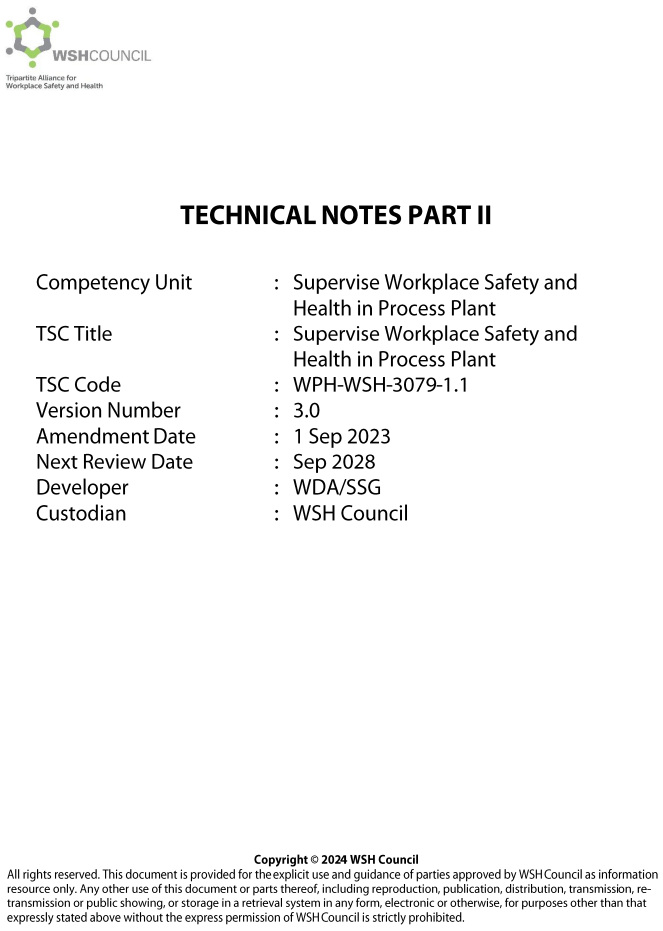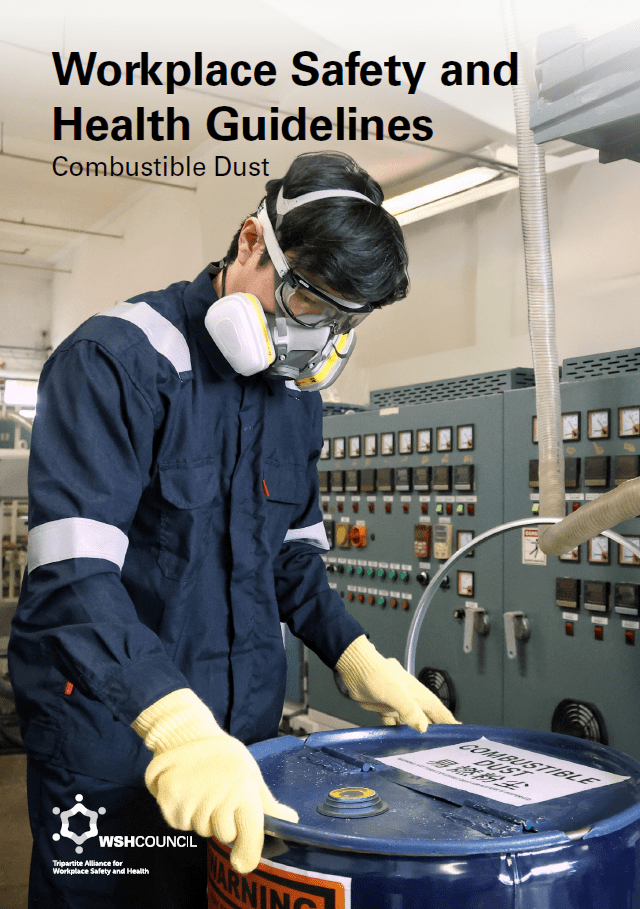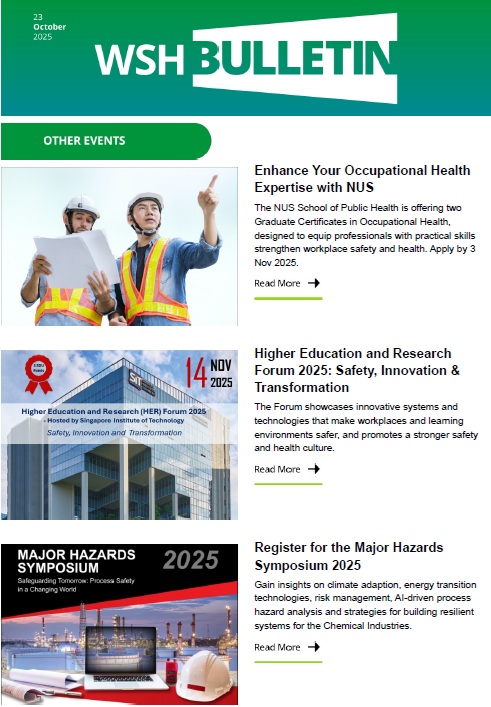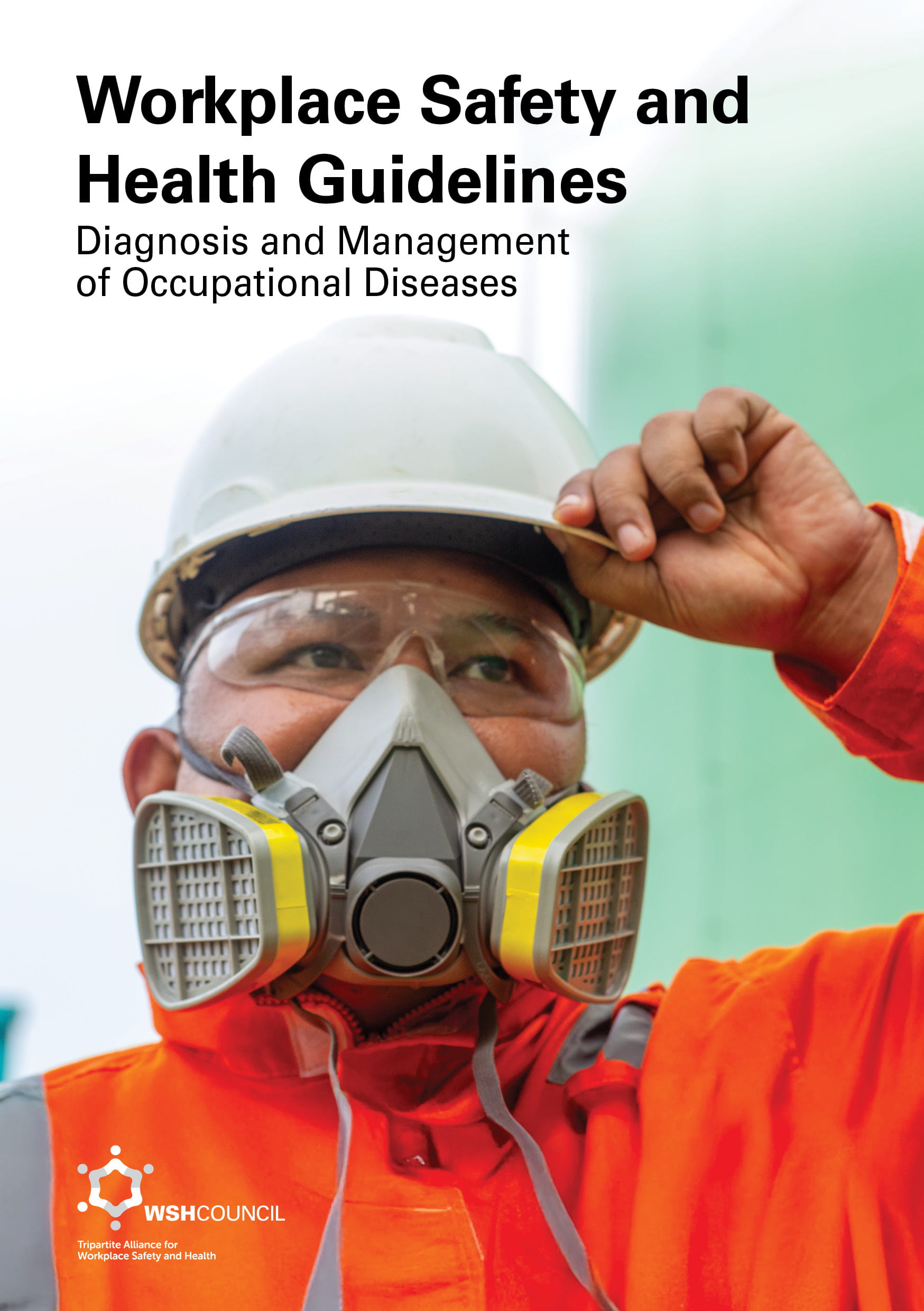Preventing Chemical Hazards
Understand the harmful effects of chemicals and how they can enter the body through various ways. And learn how to prevent these hazards in the workplace.
Chemical Hazards
Exposure to chemicals can result in harmful health effects, such as:
- Headache
- Nausea
- Skin irritation
- Injury to nervous system
- Organ damage
- Cancer
These effects may be short or long term, depending on the chemical’s toxicity as well as the level and duration of exposure. For example, some solvents may cause immediate but temporary health effects such as headache or skin irritation. Other solvents may cause chronic effects such as cancer or injury to the nervous system if the exposure is over a period of time.
Refer to the Fifth Schedule of the Workplace Safety and Health Act for a list of hazardous substances that may result in occupational diseases over time.
How Chemicals Enter the Body
Chemicals can enter the body through several ways:
- Inhalation (breathing in)
- Absorption (through skin or eyes)
- Ingestion (eating or swallowing)
- Injection (through cuts or open wounds)
Preventing Exposure to and Contact with Chemicals
When handling or working with chemicals, you should always take precautionary measures to prevent chemicals from entering your body through inhalation, ingestion and skin contact.
Employer's Role
If hazardous chemicals are used or handled in your workplace, you must:
- Establish and implement a Management of Hazardous Chemicals Programme in the workplace based on the nature of work and the hazardous chemical(s) used.
- Conduct a thorough Risk Assessment (RA) before carrying out any work with chemicals.
- Ensure all relevant safe work procedures (SWP) are in place.
- Provide the training and information necessary for your employees to work safely and healthily.
- Communicate with your employees on the hazards involved and the precautionary measures to take if they are exposed to hazardous chemicals. Such hazard communication can be done through safety data sheets (SDS) and container labels of the chemicals.
- Send your employees for medical examinations if they are exposed to specific occupational chemical hazards that are specified under the Schedule of the WSH (Medical Examinations) Regulations 2011.
- Conduct regular hygiene monitoring if your workplace uses or generates toxic substances. Refer to the First Schedule of the WSH (General Provisions) Regulations for a list of the permissible exposure levels for toxic substances.
- Ensure all personal protective equipment (PPE) is in good working condition.
Employee's Role
You must:
- Cooperate with your employer or principal.
- Practise good housekeeping and personal hygiene.
- Use the PPE provided properly.
- Follow safe work instructions and procedures given by your supervisor.
- Know where to find the information of those chemicals you are working with, as well as the risks and ways to protect yourself.
- Not carry out wilful or reckless acts that could endanger the health and safety of yourself or others.
For more information
- WSH Guidelines on Statutory Medical Examinations
- WSH Guidelines on Toxic Industrial Waste Treatment
- Worker’s Safety Handbook on Working with Hazardous Materials
- ABC Checklist – Safe Storage of Chemicals
- WSH Report (2012-2016) for Chemical Industries







